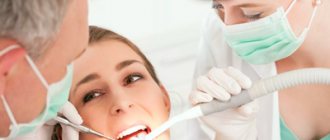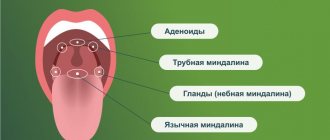1.General information
In order not to be interrupted by terminological references in the future, we will stipulate the following as a kind of preamble.
Opportunistic is an infection that occurs, literally, “at an opportunity,” “if possible,” i.e. under a certain combination of conditions favorable for the opportunistic microorganism. In turn, conditional pathogenicity implies asymptomatic parasitism or commensalism (harmless coexistence) of any microculture in the host’s body - as long as the host is healthy and immunocompetent - and the ability of this culture to undergo rapid pathogenic activation with a weakening of the immune defense, a significant change in the structure of the microbiome and some other circumstances.
Mycosis is a systemic infection by fungal cultures. Candidiasis is an extremely widespread (in fact, the most common) variant of mycosis, caused by yeast-like opportunistic fungi of the numerous genus Candida, most often Candida ablicans (the causative agent, in particular, of urogenital “thrush”).
Thus, pharyngeal candidiasis is an opportunistic mycosis caused by the activation of Candida and predominantly localized in one of the ENT organs.
A must read! Help with treatment and hospitalization!
How does the disease manifest in children?
In children, the disease occurs in an acute form and is accompanied by the appearance of redness and swelling in the oral mucosa. The child sleeps poorly, may have no appetite, and becomes tearful.
The disease can occur in children for the following reasons:
- Weakening of the immune system.
- Infection during breastfeeding.
- Transmission of the fungus during childbirth.
- Infection through household items.
If the disease is not diagnosed and treated in a timely manner, a whitish coating resembling cottage cheese will soon appear in the child’s mouth, and in an advanced stage, ulcers will appear, which are accompanied by bleeding and cause severe pain in children.
2. Reasons
In the clinic of infectious diseases, the main and universal cause, as well as a risk factor, is weakened immunity - no matter what causes the decrease in the body’s natural defenses. However, since the mid-twentieth century, another factor has appeared (and continues to gain strength), which is extremely “convenient” and favorable specifically for fungi. We are talking about antibiotics, which are often used as self-medication, in irrational doses, for too long a course, or in situations where antibacterial drugs are objectively not needed at all.
Suppression or destruction of bacterial microflora, including those that perform protective functions as a symbiont (it should be noted here that broad-spectrum antibiotics are not named this way by chance), disrupts the optimal balance in the microecological system of the human body, and fungi begin to occupy the vacated niche. According to modern estimates, fungal infections of the oral cavity and pharynx account for 40% of all mycoses of the mucous membranes. In the total volume of recorded oropharyngeal fungal invasion, candidiasis accounts for 90-95%. The remaining cases are caused by aspergillus, penicillium and other fungi, as well as their combinations (mixed pharyngomycosis).
The importance of risk factors such as diabetes mellitus, AIDS (every tenth patient with acquired immunodeficiency syndrome dies from fungal infections), smoking, allergic hypersensitivity, long-term use of hormone-containing anti-inflammatory drugs, oral sex with a carrier of genital candidiasis, as well as intestinal dysbiosis has been reported.
Visit our Otolaryngology (ENT) page
Causes of oral candidiasis
The main reason for the occurrence is a decrease in immune status, as a result of which the uncontrolled proliferation of microflora begins. Reduced immunity is observed in older people and infants, in patients suffering from HIV, AIDS and other diseases associated with immunodeficiency, in those who regularly expose the body to excessive stress, neglect the rules of a healthy diet and violate work and rest patterns. Risk factors include reasons such as:
- Use of medications.
Taking antibiotics, immunosuppressants (drugs that suppress the immune system) and some other medications leads to disruption of the immune system and the natural balance of microflora in the body. Oral contraceptives, which affect hormonal levels, have a similar effect. - Pregnancy.
During pregnancy, a sharp and significant change in hormonal levels occurs, which can lead to a surge in the activity of pathogenic and opportunistic microflora. - Radiation and chemotherapy.
Often occurs in patients undergoing drug and radiological treatment for cancer. - Injuries to mucous membranes.
Violation of the integrity of the mucous membranes leads to loss or deterioration of the barrier function, as a result of which the fungus enters deep into the tissues, causing inflammation and other symptoms. Small, but constantly recurring injuries are especially dangerous - for example, when wearing incorrectly fitted dentures or braces. - Overwork and stress.
Prolonged stress of physical and mental forces leads to a deterioration in the protective function of the body. Similar consequences are caused by hypothermia or overheating, regular lack of sleep, insufficient, excessive or simply unbalanced nutrition, abuse of alcohol, nicotine, and narcotic substances. - Hypo- and vitamin deficiency.
May be caused by a lack of nutrients, in particular vitamins B and C. - Somatic diseases.
Frequent companions of candidiasis include tuberculosis, dysbacteriosis and other pathologies of the gastrointestinal tract, diseases of the adrenal glands and other endocrine glands. Candidiasis is a contagious disease. A large number of pathogenic microorganisms are transmitted through kissing and sexual contact, through the use of shared dishes, towels and other household items. Infection can also occur during childbirth (vertical transmission from mother to fetus). In addition, there is a risk of infection through contact with infected pets.
3. Symptoms and diagnosis
As a rule, pharyngeal candidiasis occurs with few symptoms or with moderate severity of clinical manifestations. Typical symptoms include inflammation of the tonsils and mucous membranes, a dirty white coating, low-grade fever, mild malaise, discomfort or pain when swallowing.
Granulomatous, atrophic, hyperplastic, erosive-ulcerative forms are relatively less common, requiring differential diagnosis, in particular, with tuberculosis.
Candidiasis of the pharynx is easily chronic and occurs, as a rule, in waves.
The prognosis worsens when the mycotic infection spreads to adjacent and internal organs.
If oropharyngeal candidiasis is suspected, a smear is taken from the affected surface, then a culture is performed on a nutrient medium; Recently, genetic identification (PCR) and serological tests (detection of specific antibodies) have been increasingly used.
About our clinic Chistye Prudy metro station Medintercom page!
Symptoms
Infection of the oral mucosa by Candida fungus can take various forms, each of which has its own characteristics of symptoms. The most common forms of the disease are candidal angulitis, glossitis, cheilitis, and stomatitis. There are both acute and chronic forms of the disease.
- Pseudomembranous acute candidiasis is the most common form and most often occurs in infants and the elderly. This form is characterized by the appearance of severe swelling and hyperemia (redness) of the mucous membranes. In addition, a characteristic whitish coating forms on the surface of the lips, palate, back of the tongue and the inside of the cheeks. If the plaque is scraped off, the surface of the mucous membrane underneath will be macerated (softened) or ulcerated and bleeding. In this case, patients complain of pain, burning or itching in the mouth; Eating becomes very difficult. Very often the process spreads to the esophagus and pharynx.
- Acute atrophic candidiasis of the oral mucosa usually develops due to the lack of adequate treatment. The upper part of the mucous membranes (epithelium) is exfoliated, the mucous membrane becomes thin, red or, on the contrary, swollen. The patient’s tongue and the corners of the lips also acquire a bright red color; the papillae on the tongue atrophy and smooth out. The plaque is absent or is found only in hard-to-reach places.
- Hyperplastic chronic candidiasis is characterized by the formation of a large number of papules and plaques of irregular or round shape. They are located close to each other on the mucous membrane of the tongue and cheeks and often become soldered and fused. Around each such formation there is a thin rim of reddened, inflamed tissue. It is difficult to scrape off or otherwise remove such a plaque. The oral cavity becomes dry and rough; When chewing, speaking, and even at rest, patients experience significant discomfort and pain. It should be noted that this disease most often affects men over 30 years of age.
The main cause of the chronic atrophic type is constant injury to the mucous membranes, for example due to wearing a prosthesis. Symptoms of the disease are localized in the affected area. Redness of the mucous membrane occurs (often along the contour of the lesion), plaque forms, pain and burning occur, and the membranes become dry.
Causes of candidiasis
- Frequent damage to the skin and mucous membranes, for example, due to illness, working with aggressive chemicals, dry skin, age-related changes.
- Prolonged exposure to water, humid and warm environments. This includes a climate that is not suitable for your skin type, as well as occupational hazards.
- Mechanical damage to the skin and mucous membranes: injection drug addiction, long-term surgical interventions, catheters, shunts, endotracheal tubes.
After entering the body, the fungus may not manifest itself for a long time, since its reproduction will be suppressed by the immune system. In some cases, natural defenses weaken, leading to candidiasis (thrush). Among the factors that contribute to the proliferation of Candida:
- Chronic, endocrine and immune system diseases (diabetes, HIV).
- Metabolic disorders or taking medications that disrupt the natural microflora (antibiotics, hormonal contraceptives).
- Unbalanced diet, lack of sleep, stress and depression.
The fungus can be found in raw meat, unpasteurized dairy products, and, in more rare cases, on fresh vegetables and fruits. You can become infected with candidiasis from animals: dogs, calves, poultry.
Diet for illness
Patients are recommended to take rice porridge.
To ensure the most effective treatment, the patient must adhere to a diet during this period.
The fungal pathogen actively multiplies in the area of the esophagus if yeast, sugar and mold are regularly introduced into the body.
That is why high carbohydrate foods are excluded from the diet. These are simple sugars. Patients are prohibited from consuming sweets, alcoholic beverages, jam, rolls, honey, and sugar.
During the treatment of the disease, eating whole milk is strictly prohibited. This is explained by the fact that it contains lactose, which provokes the development of fungus. It would be best to replace it with natural yogurt, fermented baked milk, kefir, homemade cottage cheese, as well as products that contain a large amount of fiber.
If the disease occurs as a result of long-term use of antibiotics, then to restore the flora of the digestive tract, it is necessary to add not only fermented milk products to the diet, but also herbs, especially parsley and dill. Patients are also recommended to eat low-gluten cereals - buckwheat, rice, millet. The patient should regularly eat legumes and berries.
Kombucha is a fairly effective remedy in the treatment of esophageal candidiasis. It is used to prepare a medicinal prophylactic drink, with the help of which the human immune system is strengthened.
Some patients, after going on a diet, begin to complain of weakness and unmotivated fatigue. This is explained by the fact that several times less simple carbohydrates enter the bloodstream. This period does not last long. If proper treatment is provided, the patient will feel much better in a few days.
Diagnostics
To make an accurate diagnosis, a combination of several methods is used - from a simple examination and questioning of the patient for complaints to laboratory methods, such as culture, microscopic examination of biomaterial, analysis of the degree of contamination of the oral cavity with fungal mycelium.
Oral candidiasis is accompanied by a number of characteristic external signs, in particular the formation of plaque, bad breath, ulceration and hyperemia of the mucous membranes. However, laboratory methods make it possible to accurately determine the type of pathogen and exclude the possibility of a secondary infection, which may affect the nature and duration of treatment.
Differential diagnosis is used to separate cases of candidiasis from aphthous stomatitis, leukoplakia, lichen ruber, streptococcal infection and other infectious pathologies of the oral cavity.
Disease prevention
Preventive measures are aimed at improving the condition of the microflora. These include:
- Proper oral hygiene.
- A thoughtful diet with a high amount of protein foods and reduced consumption of foods containing glucose.
- Quitting smoking and alcoholic beverages.
- Timely examination by the attending dentist for the prevention, diagnosis and treatment of the disease.
- Avoid taking medications, such as antibiotics, without first consulting your doctor.
- If the patient has dentures, then one of the preventive measures will be their regular treatment in a special solution.
Sources:
- The role of anti-inflammatory rinse in the treatment of periodontal diseases (L.Yu. Orekhova, A.A. Leontyev, S.B. Ulitovsky) L.Yu. OREKHOVA, Doctor of Medical Sciences, Prof., Head of Department; A.A. LEONTIEV, dentist; S.B. ULITOVSKY, Doctor of Medical Sciences, Prof. Department of Therapeutic Dentistry of St. Petersburg State Medical University named after. acad. I. P. Pavlova
- Report on clinical trials to determine/confirm the preventive properties of commercially produced personal oral hygiene products: mouth rinse "ASEPTA PARODONTAL" - Solution for irrigator." Doctor of Medical Sciences Professor, Honored Doctor of the Russian Federation, Head. Department of Preventive Dentistry S.B. Ulitovsky, doctor-researcher A.A. Leontiev First St. Petersburg State Medical University named after academician I.P. Pavlova, Department of Preventive Dentistry.
- Study of the clinical effectiveness of treatment and prophylactic agents of the Asepta line in the treatment of inflammatory periodontal diseases (A.I. Grudyanov, I.Yu. Aleksandrovskaya, V.Yu. Korzunina) A.I. GRUDYANOV, Doctor of Medical Sciences, Prof., Head of Department I.Yu. ALEXANDROVSKAYA, Ph.D. V.Yu. KORZUNINA, asp. Department of Periodontology, Central Research Institute of Dentistry and Maxillofacial Surgery, Rosmedtekhnologii, Moscow
Causes and symptoms of the disease
Candidiasis of the esophagus can occur against the background of diabetes mellitus.
There are several reasons why a person becomes infected with esophageal candidiasis. Most often, the disease is diagnosed when a person comes into contact with a patient with candidiasis.
If the food that a person eats is contaminated with yeast, this leads to the appearance of the disease.
A fairly common cause of esophageal candidiasis is a weakened immune system. When using household items contaminated with fungi, the patient is also diagnosed with esophageal candidiasis.
The activity of the fungus of the genus Candida can be activated during injuries of the esophagus, the cause of which in most cases is undigested food. A decrease in the performance of the immune system is observed in patients during the period of taking corticosteroids. If a person uses antacid therapy for a long time, this can cause the disease. Very often, esophageal candidiasis occurs against the background of:
- Organ motility disorders;
- Lack of protein;
- Diabetes mellitus;
- Pregnancy;
- Immunodeficiency;
- Dysbiosis of mucous membranes.
The cause of the disease can be a variety of allergic reactions. Candidiasis also appears against the background of cancer. This disease is also often diagnosed with adrenal hypofunction.
When esophageal candidiasis appears, many patients do not experience symptoms, which greatly complicates the process of diagnosing the disease. When the disease appears, some patients experience decreased appetite.
Also, esophageal candidiasis can be accompanied by heartburn. During the course of this disease, swallowing disorders may be diagnosed. Most patients experience pain during this process.
Features of treatment
Fluconazole is a drug for the treatment of candidiasis.
Treatment of esophageal candidiasis in most cases is carried out with the use of medications.
For this purpose, antifungal medications are used. To ensure the full functioning of the immune system, it is necessary to use immunostimulants.
To treat esophageal candidiasis, it is necessary to use three groups of drugs. Therapy is carried out using polyene antibiotics. These medications are widely used to eliminate genital candidiasis.
In most cases, treatment of intestinal candidiasis is carried out with the use of Natamycin and Nitstatin. During the treatment of the disease, it is necessary to take into account the weak effectiveness of these drugs.
Azole antibiotics in the form of Albaconazole, Fluconazole, Introconazole, and Ketoconazole can be used to treat the pathological condition. The third group of drugs for the treatment of esophageal candidiasis includes echinocandins. In most cases, treatment of the pathological condition is carried out with Micafungin, Capsofungin, Anidufalfungin.
In order to activate immune processes, patients are prescribed a granulocyte concentrate to the affected area. This procedure is performed using an endoscope. Despite the huge number of medications that are used to treat esophageal candidiasis, it is very difficult to correct the affected organ.
This is explained by the fact that many medications are characterized by insufficient effectiveness. Other medications have undesirable effects that are difficult to treat. In addition, many Candida fungi are resistant to antifungal medications.










